Fort Worth Museum Opens Grossology + Animal Grossology Exhibit
Thanks to the Fort Worth Museum of Science and History, my family was able to attend the new exhibit as media guests. The Grossology exhibit walks kids through the science of the human body in a fun and disgusting way. Kids love it! I was pretty fascinated by the Animal Grossology exhibit, which is slightly larger than the human area. My kids learned so many fun facts and, surprisingly, so did I.
Animal Grossology at Fort Worth Museum

Animal Grossology turns gross topics such as slime, vomit, and dookies into interactive, larger-than-life biology lessons. The exhibit harnesses kids’ natural curiosity about themselves and teaches them how animals function.
Here are just a few fun facts featured in educational and entertaining displays in Animal Grossology:
- A cow’s stomach is equal in size to nine human stomachs.
- Some frogs belch their babies into the world.
- A Hagfish may be the slimiest creature on earth.
- Tapeworms grow inside the stomach and can grow up to 60 feet-long.
- Slime is essential to some animals, providing important functions such as facilitating motion, aiding in digestion and for defense.
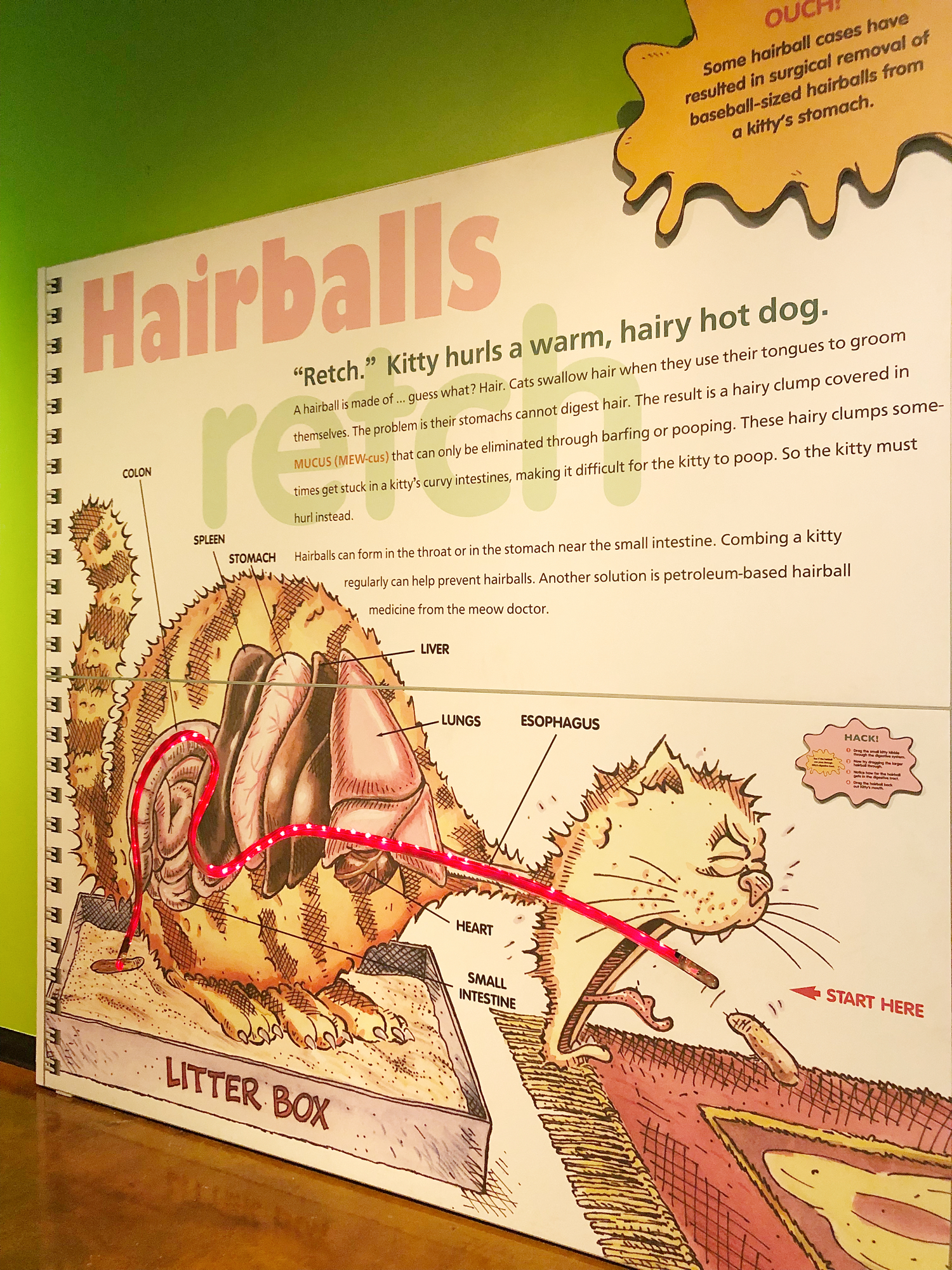
Each science lesson comes with a visual. I love how they teach why a cat has a hairball and not just where it comes from but also a demonstration of each body part in the cat. It is so gross but a great lesson. There is also a great little tip about combing your kitty to prevent hairballs – so if your family has a cat you can use this lesson to encourage them to help care for your pet.

Did you know that dogs do not only sniff one another’s behinds when they first meet, they do this each time to recognize their friends. Yes, you can smell the scent of a dog’s pheromones at the exhibit. I didn’t have the courage to sniff it but my son did.
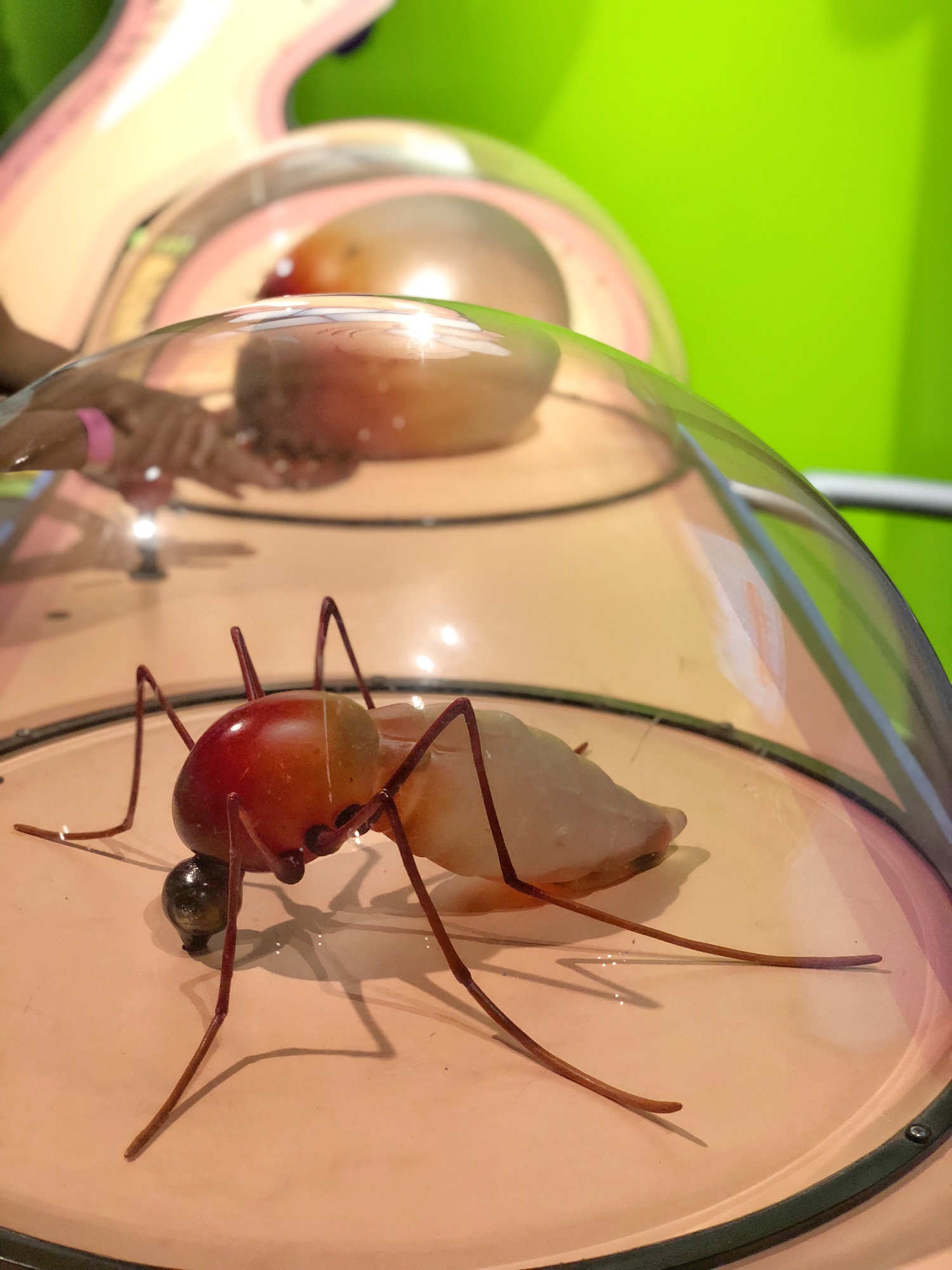
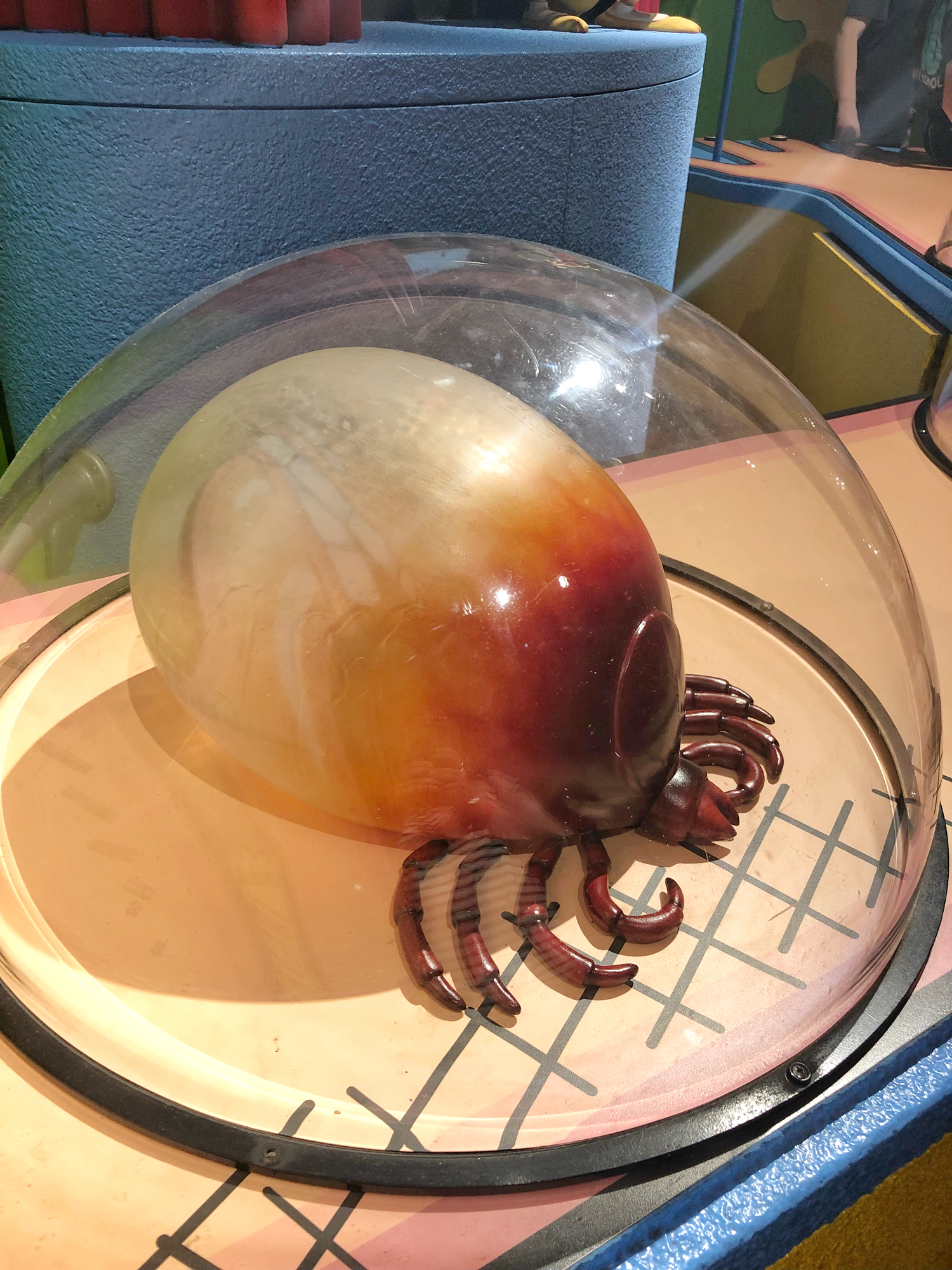
The interactive exhibit allowed kids to push a button to pump pretend blood into the body of a tick and mosquito. The translucent body of the bugs provided the ability to see how the blood flows in the insect. My son thought this was cool.

In Texas, it feels like the mosquitos truly are that big!
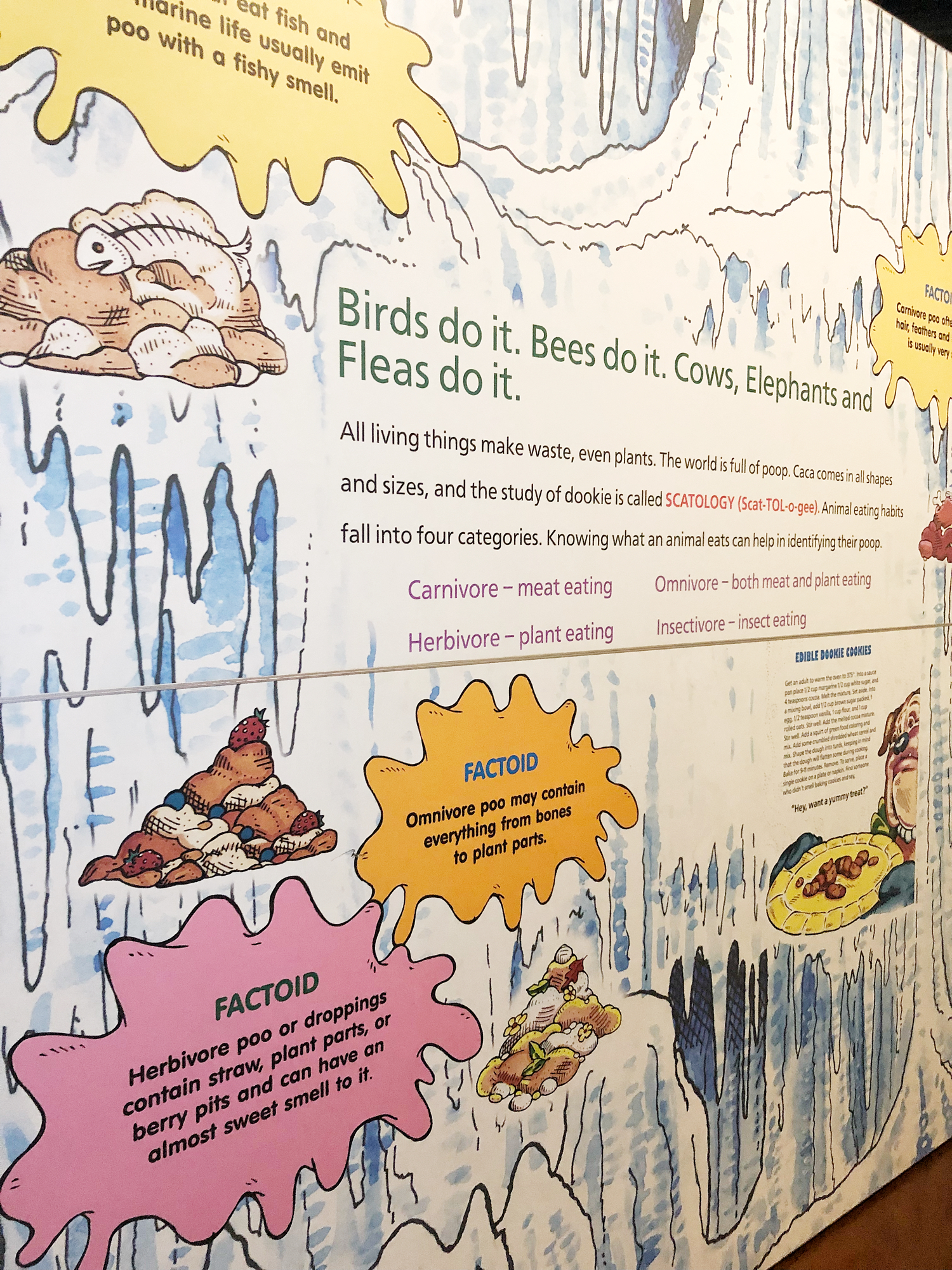
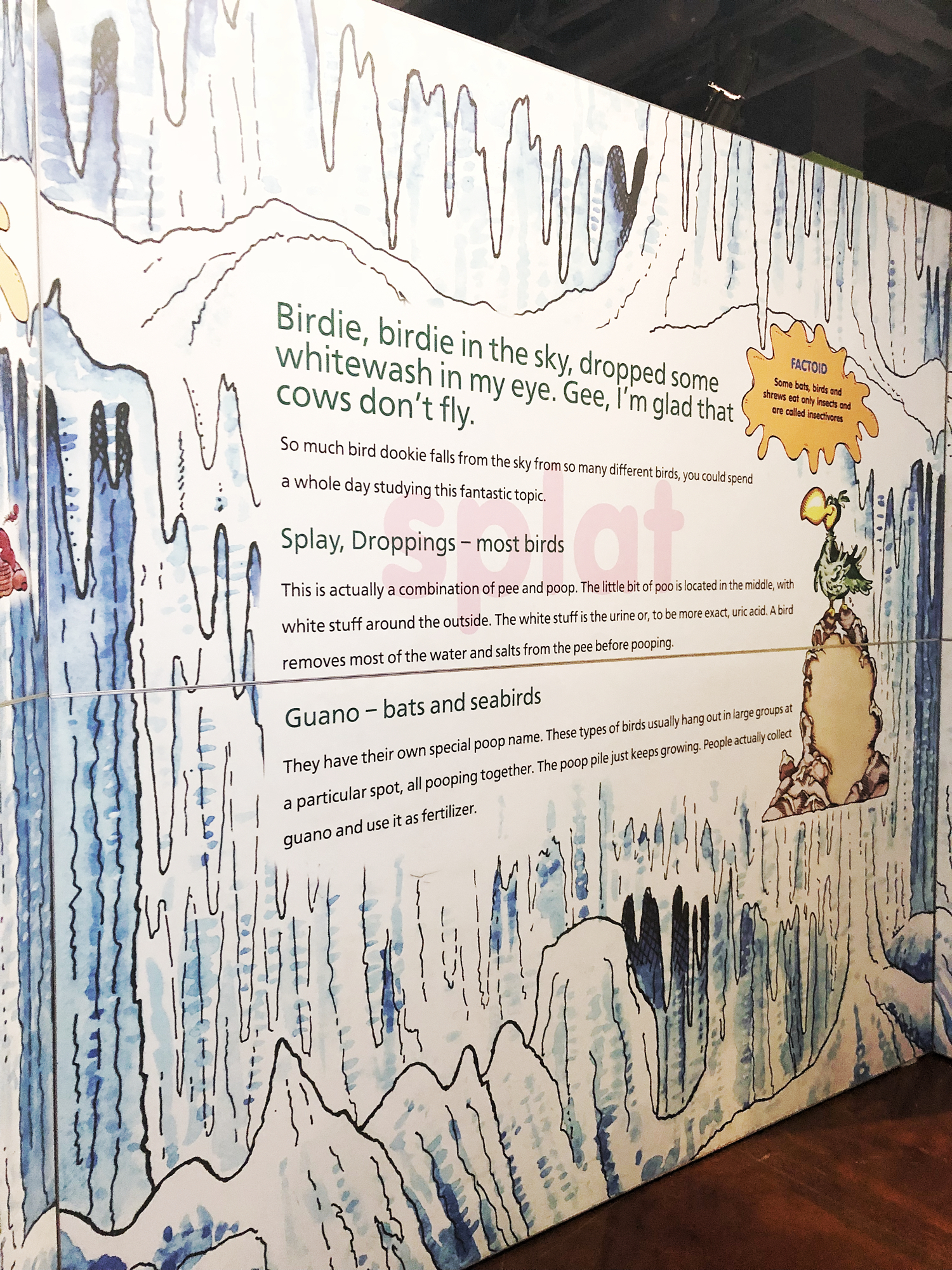
Another fun interactive exhibit was a game for kids to play. They had to match the pile of poop with the animal that left it. I actually guessed wrong on a couple of them. It taught how animals digest their food and what they eat. You can find skeletons in the poop of some animals, whereas others have seeds or parts of plants.
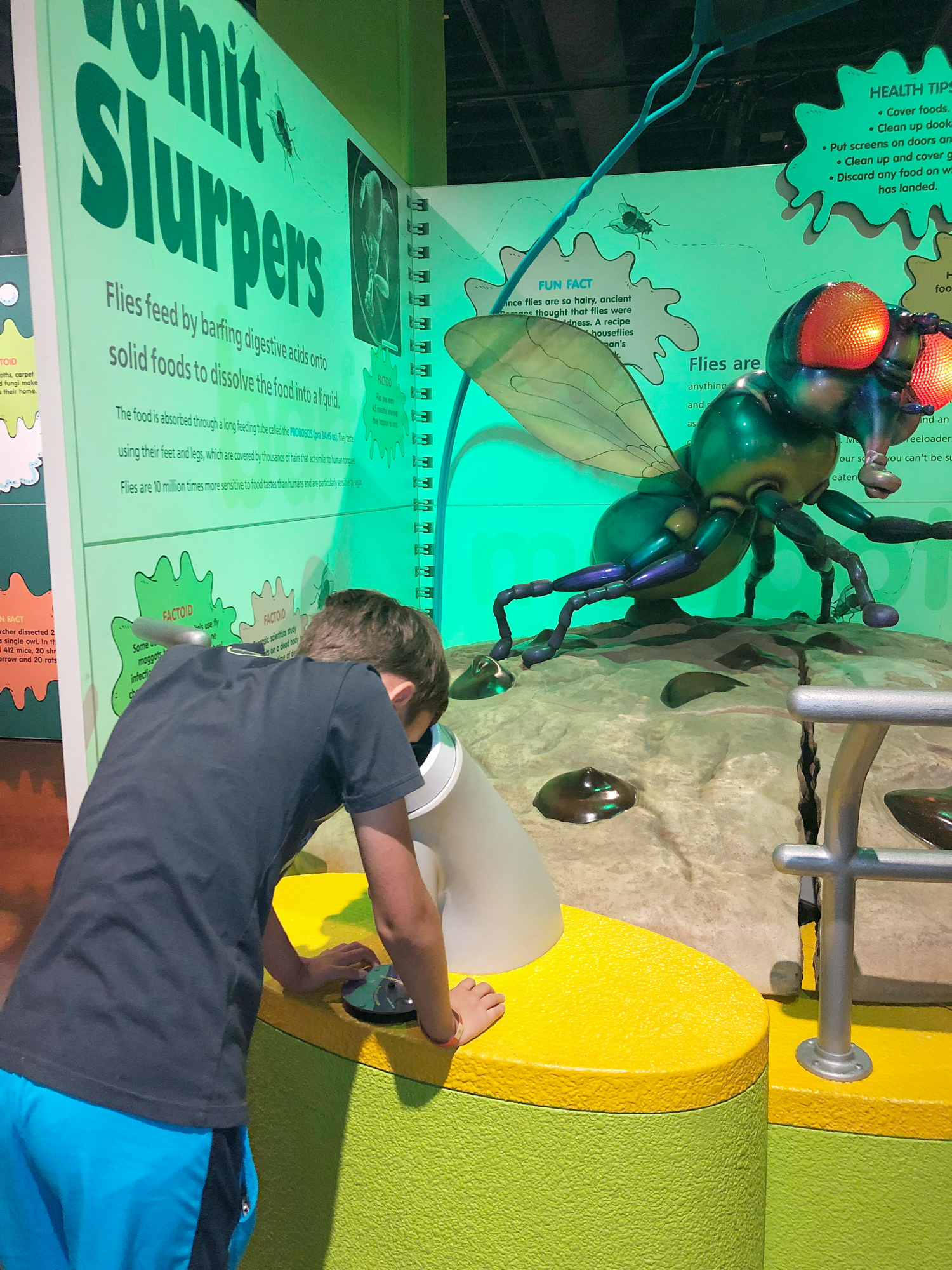
I always heard when I was a kid that each time a fly landed it pooped. I wasn’t sure if that was a wise tale or not but apparently flies pee every 4.5 minutes. Kids learn the importance of covering food when outdoors. A study showed that on a given fly body, an average of 1,250,000 bacteria can be found. So gross!
Kids can view parts of a fly’s body, including the wing, through a microscope.
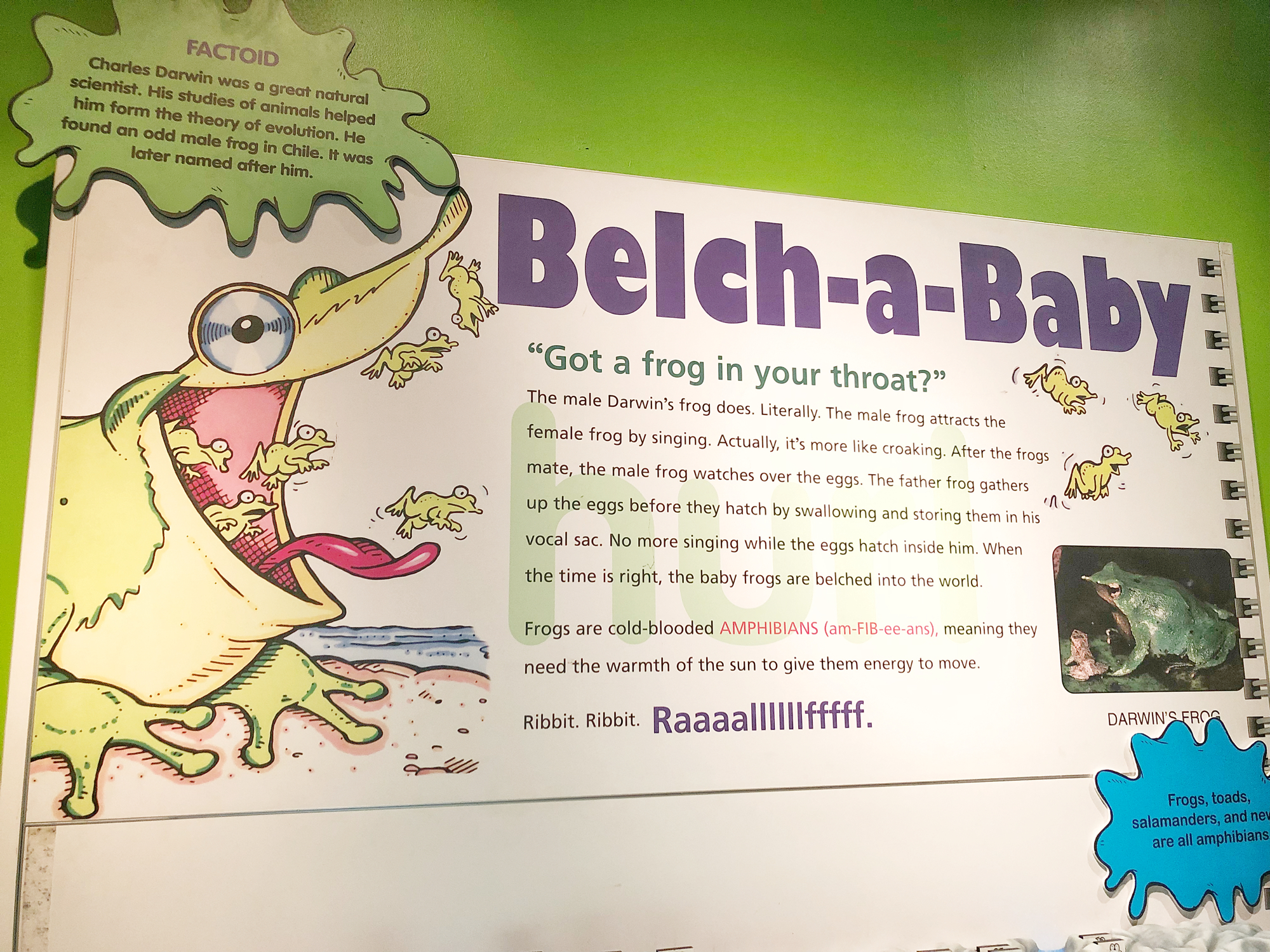
This was my favorite fact to learn during the entire exhibit I think. I had no idea that male frogs belch out their babies when they are born. Fascinating. Now we know where the saying ‘got a frog in your throat’ came from.
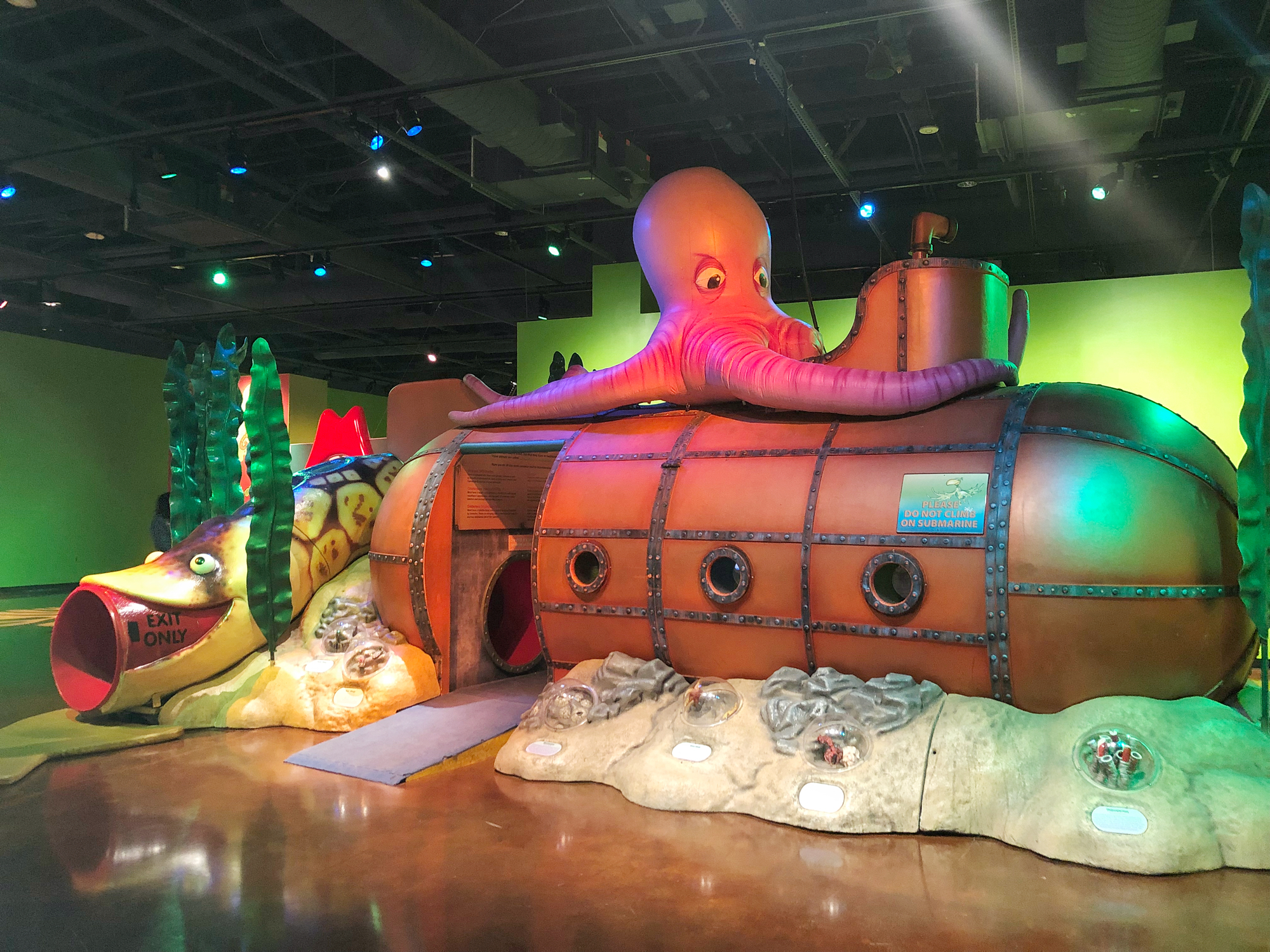
I love how the exhibit had many areas for interaction instead of just reading and viewing displays.
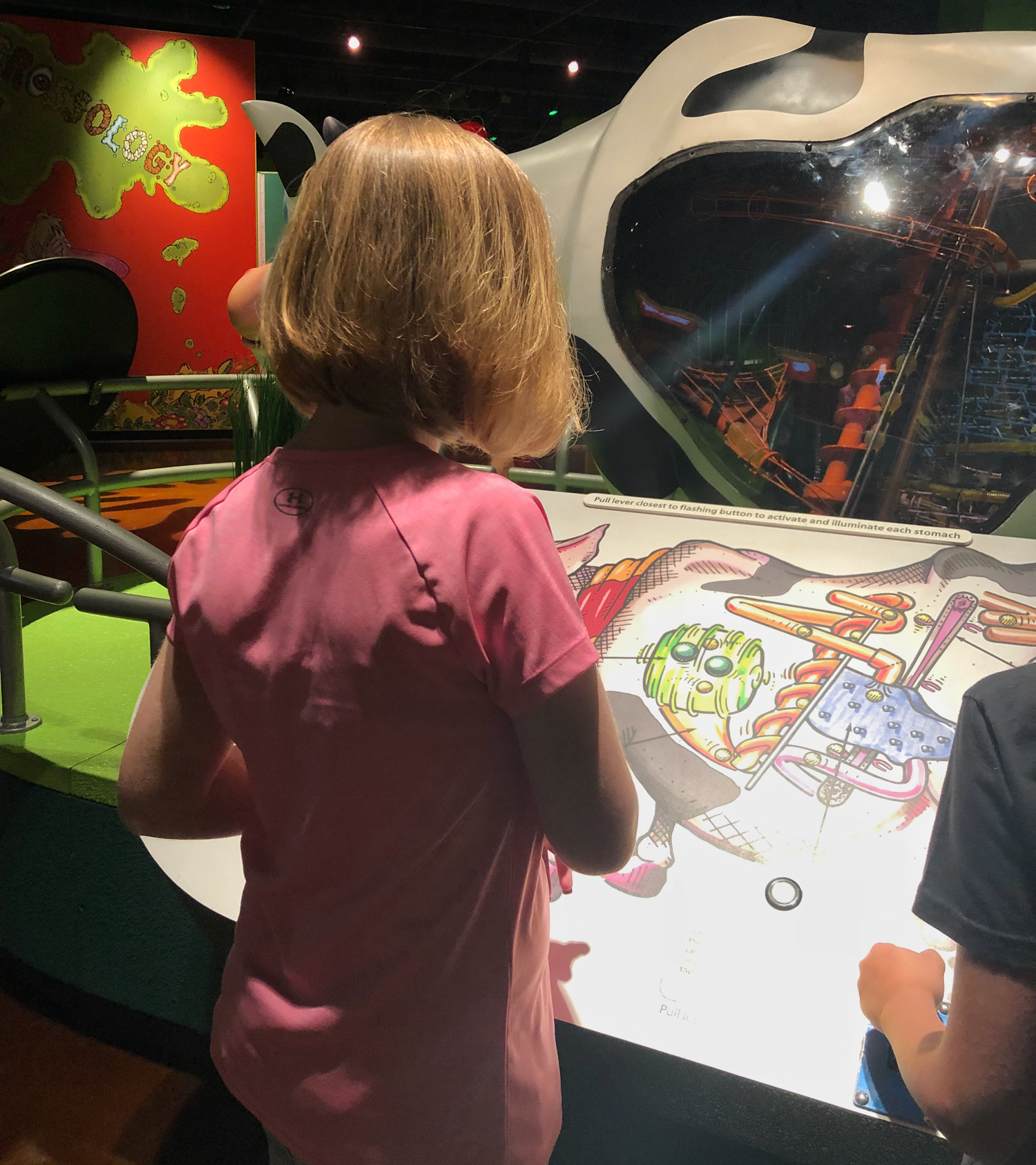
Even the teen got in on the fun. Our family challenged one another with the facts and guessing games.
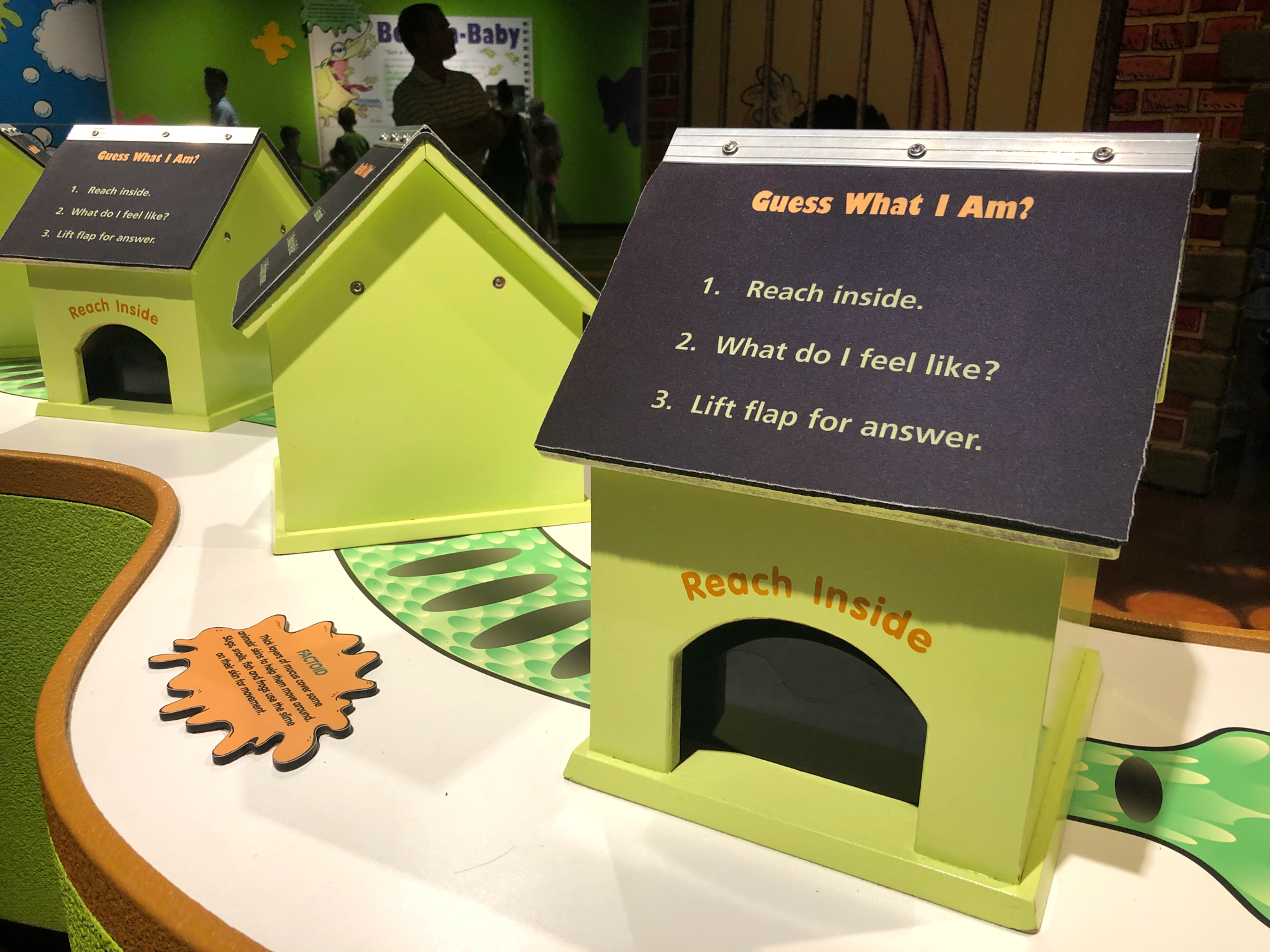
Grossology: The Impolite Science of the Human Body
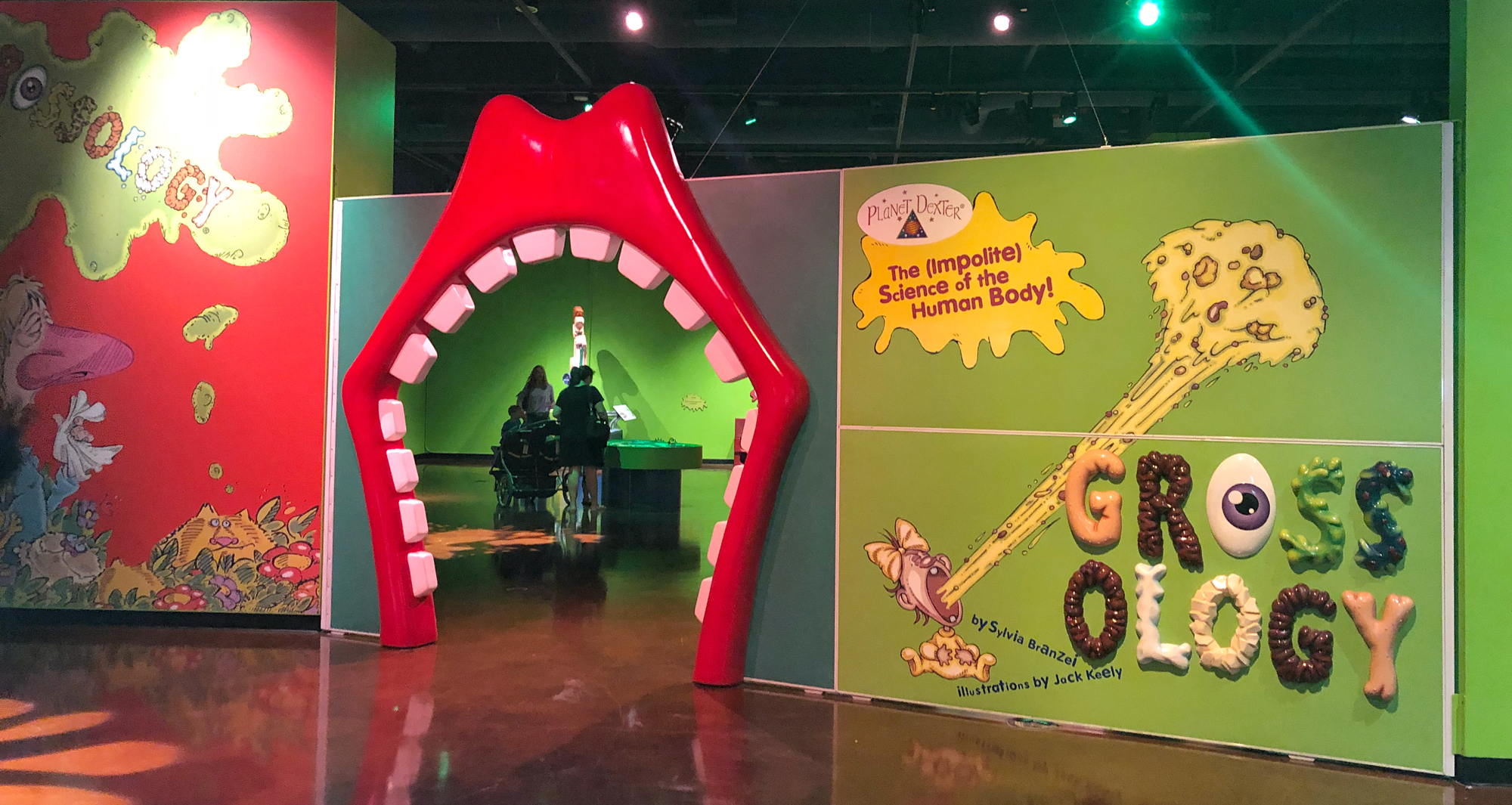
Grossology: The (Impolite) Science of the Human Body, a science-in-disguise exhibition where kids get the answers to many of the slimy, oozy, crusty, stinky questions they absolutely love to ask about the human body.
Designed to be the first of its kind, the exhibition gives kids, along with intrigued adults, an opportunity to:
- Climb a human skin wall with warts, hairs, wounds and other objects that act as hand and foot holds. Here visitors discover more about features such as pimples, blisters, pores, bruises and scabs as they relate to the epidermis.
- Stop by the Toot Toot exhibit to create different sounds that replicate the physics of gas.
- Play surgery and attempt to remove organ parts from a body without touching the sides of the patient.
- And so much more!
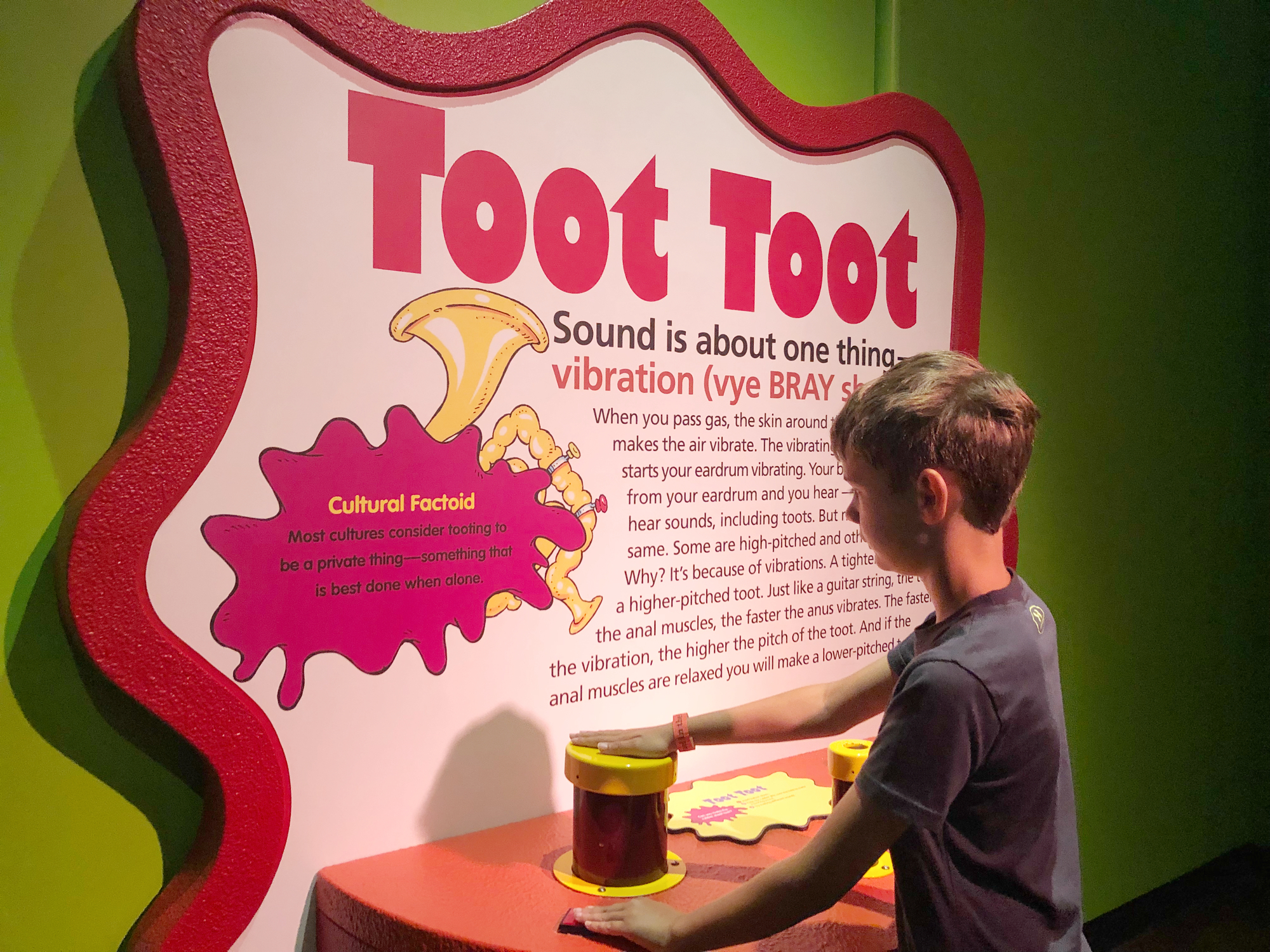
Boys love toots. This was an interesting station. Kids learn about what causes the sound when you pass gas and they could feel the vibrations plus make their own tooting sounds. Many laughs were shared in this area.

More gases with this burp machine. My son was able to pump the soda into the man’s belly until the air built up inside and caused him to burp. The clear tank makes it possible for kids to learn why and how this happens.

This brings the gross to grossology. The mucus kept forming and dripping downwards and then would go back up. So disgusting but kids loved it. So many lessons taught about health and passing germs.
If you are local to the Dallas/Fort Worth area, I recommend taking the kids to see the Grossology exhibit this summer. It makes learning about science fun. There are several games for them to play and I joined along. I will admit I even learned a few new facts. It only took us about an hour or two to complete the full exhibit, younger kids may need more time.
Pin for Later:


That looks like a really fun museum. My son would really love a museum like that if we had one in my area. Maybe the next time I go to my local science museum I might drop a few hints that they should open up a few exhibits dedicated to grossology 🙂